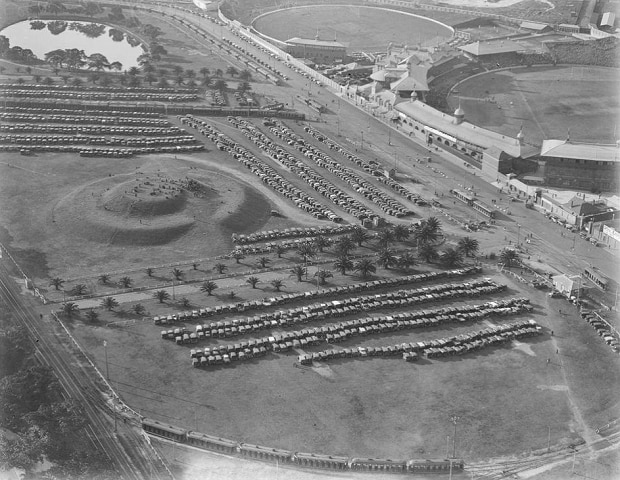Once upon a time, Sydney had an extensive light rail system.
It was Australia’s largest tramway network, second largest in the Commonwealth (behind London) and one of the largest in the world.
It served the inner suburbs between 1879 until 1961, and split the now Moore Park sporting precinct in half.
It was a busy network, to say the least, with about 1,600 tramcars in service at its peak during the 1930s.
Crazy considering there are some 500 tramcars operating in and around Melbourne these days.
It became a viable transport option for sports lovers.
A loop and a stop in the tram line was built in 1881 to provide access to the SCG, the showgrounds (now Fox Studios and the Entertainment Quarter) and, later, SCG No. 2 Oval (now where Sydney Football Stadium sits) and Sydney Sports Ground (now where the Moore Park car park sits).
Due to the already heavy use of the network, plus the increase use of private motor cars and bus services, Sydney’s road became heavily congested.
Against public opinion, operation began to cease in the late 1930s and by 1961 the light rail was no more.
Half a century later and the NSW Government is going back to the future with the construction of a (with exception to the original L1 Dulwich Hill Line) light rail line, servicing the CBD and South East, due to open in 2019.
The Sydney Swans know all about it with part of the Club’s pre-season training facility, Kippax Oval or Lakeside Oval, cut off due to the new network’s ongoing construction.
Once completed though, the Sydney Swans will reap the benefits as supporters will gain access to higher capacity public transport to the SCG and surrounds which are currently served only by buses.
The Club received an aerial photo recently, shot in the 1930s, which shows a section of the Moore Park precinct including the SCG, SCG No. 2 Oval and Kippax Lake.
For a bit of fun, Sydney Swans Media took a drone out and captured the precinct now in all its modern glory.
Notice ‘the mountain’ with spectators trying to catch a glimpse of the action inside the SCG.
The mound, dubbed ‘Mt Lang,’ was reportedly formed from the spoil dug out and dumped there during construction of the Circular Quay Railway tunnel.

Before...

After...
A #TransformationTuesday with a difference! The @scg precinct.
— Sydney Swans (@sydneyswans) May 30, 2017
We took the second image today but when do you think the 1st one was? pic.twitter.com/euGSSop4yf


